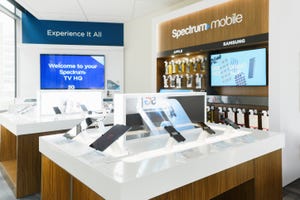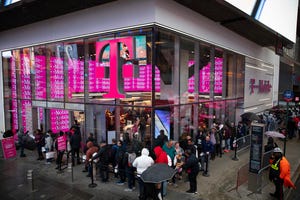The Money's on MSPPs
Multiservice Sonet is the key battleground for telecom equipment players such as Alcatel, Nortel, and Cisco UPDATED 12/12/03
December 3, 2003

Multiservice Sonet/SDH platforms will be as fundamental to telecom networks in the coming decade as routers were to the Internet of the 1990s, says a new Heavy Reading report.
Because this market is so crucial, look for an intensification of the battle between the world's top equipment vendors – including Alcatel SA (NYSE: ALA; Paris: CGEP:PA), Cisco Systems Inc. (Nasdaq: CSCO), Lucent Technologies Inc. (NYSE: LU), and Nortel Networks Corp. (NYSE/Toronto: NT) – all of which covet leadership in this space, says "The Future of Sonet/SDH."
What's the big deal? Sonet refuses to be unseated by all-optical transport or native Ethernet transport, says the report. Carriers simply have too much invested in their Sonet networks to walk away from them. And most operators can't see enough revenues coming from new services to justify building overlay networks.
Scott Clavenna, Heavy Reading's Chief Analyst and author of the report, says carriers won't be satisfied with just one multifunction box and, now that they're required to transport more data than ever, every piece of the transport network is forced to change.
"Data-over-Sonet affects every box in the network," Clavenna says. "So the digital crossconnect will evolve to a 'data-aware' MSSP [multiservice switching platform] and access devices will more commonly use GFP [generic framing procedure] to mix TDM and native Ethernet on the same access link. As carriers look to add data services to their transmission networks, they're finding that the MSPP is just the beginning."
That said, today's Sonet platforms are about finding ways to let carriers aggregate, switch, and transport just about any kind of traffic available over a legacy Sonet network (see The Death & Life of Sonet/SDH).
Based on several carrier interviews, the report describes the ideal Sonet/SDH system and ranks the leading equipment providers.
In Heavy Reading's vendor-by-vendor analysis, Nortel emerged as the vendor with the most promise of being the Sonet heavyweight of the future. Still, the heavyweight has a glass chin of sorts: It lacks a large ILEC customer in the U.S.
What helps Nortel's case is its global customer base and enormous Sonet product lineup. The company's new edge device, the Optical Multiservice Edge (OME) 6500, makes its way into carrier networks next year and will fill a gap in Nortel's product arsenal (see Nortel Gets Edgy).
So what about the other combatants -- such as Cisco? The routing giant is credited with inventing the next-gen Sonet market with its acquisition of Cerent Corp. and the continued development of the ONS 15454. While its ONS 15454 is a hit in the U.S., it's not a major carrier staple worldwide (see Cisco Winning Market Perception War). Cisco also lacks a core optical switch, a project it abandoned after scrapping the product it bought from Monterey Networks.
Alcatel comes closest to catching Nortel in the report's vendor analysis. It has a broad product line encompassing next-gen Sonet/SDH access, a range of MSPPs, and scaleable optical switching systems that can function as super broadband DCSs, MSSPs, and core optical switches. However, it has a comparatively limited next-gen Sonet line for North America, made up of only the 1603 MSPP, the 1680 OC192 transport platform, and the 1677 MSPP, which serves as a wideband and broadband DCS as well.
Lucent also scored high, thanks largely to its strong RBOC presence, but its muddy strategic direction held it back from beating Alcatel and Nortel. It also lacks RPR support on the DMX, storage over Sonet/SDH, and dense VT1.5/VC12 switching on the LambdaUnite, the report says.
Besides having a multiservice provisioning platform (MSPP) – the de facto next-gen Sonet platform – in their arsenals, carriers also require several other emerging, and increasingly important, Sonet equipment categories. These include:
Access CLE (customer-located equipment) – preferably should support GFP and virtual concatenation;
Multiservice switching platform (MSSP) – should be something more than just a repurposed broadband DCS or core optical switch;
Multiservice transport platform (MSTP) – should support a tight integration of Sonet ADM and metro/regional DWDM for high-capacity service multiplexing and transport; and
Core STS1/VC4 switch – should have at least 640 Gbit/s of switching capacity and subrate grooming support.
Table 1: Next-Gen Sonet/SDH Product Scorecard
Vendor | Access CLE | MSPP | MSTP | MSSP | Core STS1/VC4 Switch | Product Breadth (1-5) |
Nortel | OPTera Metro 3100 | OPTera Metro 3400, 3500 (Sonet); | OME 6500 | OME 6500 | OPTera Connect HDX | 5 |
Alcatel | 1640FOX, 1642 Edge Multiplexer | 1650, 1660, 1670 OMSN (SDH), 1603 | 1696, 1677 | 1670 (SDH), 1677 (Sonet), 1680 (Sonet) | 1664, 1674, 1680 | 5 |
Lucent | DMXpress, DMXtend, DMXplore (Sonet), Metropolis ADM (SDH) | Metropolis DMX, Metropolis ADM (SDH) | Metropolis DMX, Metropolis ADM (SDH) | Lambda-Unite | Lambda-Unite, Metro-optimized | 4 |
Cisco | ONS 15302/ONS 15305 (SDH), ONS 15327 (Sonet) | ONS 15327, 15454 | MSTP 15454 | ONS 15600 | ONS 15600, Metro-optimized | 4.5 |
Source: Heavy Reading |
Even the most complete Sonet kits from the largest vendors have areas of improvement. Carrier customers are still demanding Ethernet-based services from Sonet networks that are tough to deliver on today's platforms.
In the future, service providers may require, for example, MSPPs that can provide point-to-multipoint Ethernet-based transport over the Sonet infrastructure, even if it will be many years before Ethernet services make up a sizable chunk of carrier sales (see Heavy Reading Spotlights MSPP Split ). Point-to-point Ethernet transport is common over MSPPs today, but switched multipoint Ethernet service requires Ethernet switching or RPR to be integrated into the platform, a feature many vendors don’t yet support.
"If the feature sets for MSPPs... do not enable the (Layer 2) VPNs, etc. that customers want, then next-gen Sonet products fall short... and will require overlay Ethernet networks," says Steve Plote, director of technology at Looking Glass Networks Inc.
"The Future of Sonet" mentions more than 30 vendors and includes a detailed analysis of 12 large carrier networks. The top ten vendors analyzed in the report include Alcatel, Ciena Corp. (Nasdaq: CIEN), Cisco, Fujitsu Ltd. (OTC: FJTSY), Huawei Technologies Co. Ltd., Lucent, Luminous Networks Inc., Nortel, Siemens AG (NYSE: SI; Frankfurt: SIE), and Tellabs Inc. (Nasdaq: TLAB; Frankfurt: BTLA).
— Phil Harvey, Senior Editor, Light Reading
"The Future of Sonet/SDH" is published in PDF format and is available now for $3,950. To read the executive summary and purchase the report, click here.
Read more about:
OmdiaYou May Also Like










